With the introduction of AI and other powerful data scraping and enrichment tools, there’s never been a better time to leverage programmatic SEO.
For those unfamiliar – pSEO is a powerful method that addresses the growing amount of search traffic by publishing landing pages on a large scale.
This approach enables businesses to create a bunch of SEO-optimized web pages at once, using existing data and pre-programmed rules.
Examples of pSEO within the SaaS space include:
In this article, we’ll explore Programmatic SEO and explain step-by-step how to build and implement a pSEO strategy that compounds organic growth and drives real business impact.
Prefer to follow along by watching a video with a live example? Check out the video below 👇
Programmatic SEO is nothing new and has been around for years.
It’s become a hot topic, and many SaaS companies are jumping on the bandwagon to implement pSEO strategies. This is due to the access to new tools, including CMS platforms like WebFlow and the wide availability of data scraping tools like Clay, that help build a pSEO solution at a minimal cost.
Only a few years back, you’d likely require an entire team of engineers, designers, and the like to properly build a working solution.
For example – we’re implementing a pSEO strategy with Simple Testimonial using a team of two, and no more than a few hundred dollars to scale a 10k+ page set to start that we have high expectations for when it comes to driving conversions in the coming months.
This is all thanks to the advancement of AI, crawling tools, and WebFlow, which allow us to build and manage this with minimal time and minimal cost.
Here are the core tools we’re using in our tech stack to make our programmatic efforts happen:
The combination of these tools is more than enough to get the job done in many cases.
For companies that can already support pSEO with their current CMS or custom-built solution and have the existing data sets – it’s more a question on the strategy and execution side vs. choosing the right tools.
Sure, there are use cases for pSEO where other tools will help fill in the gaps in content and data scraping – depending on your use case.
But in the majority of cases, as well as for clients we’re working with – these are what we’re leveraging to get the job done.
In the case of enriching data with AI and machine learning, we’re testing and using a few other tools with great success in scaling large page sets that rank – but we’ll save those findings for another article and discussion.
Programmatic SEO must adhere to a few core fundamentals for it to be effective, meaning it must actually drive compounding growth and result in the desired users’ actions.
Before we dive into the step-by-step, I want to nail these few items down first.
Here are some key fundamentals to keep in mind when implementing programmatic SEO:
Content accuracy is crucial for effective programmatic SEO.
Programmatically created pages must provide accurate, useful, and up-to-date information to users.
Inaccurate content can lead to poor user experiences, damage a site’s reputation, and degrade search rankings.
Zapier’s a good example of providing content accuracy with their integration pages:
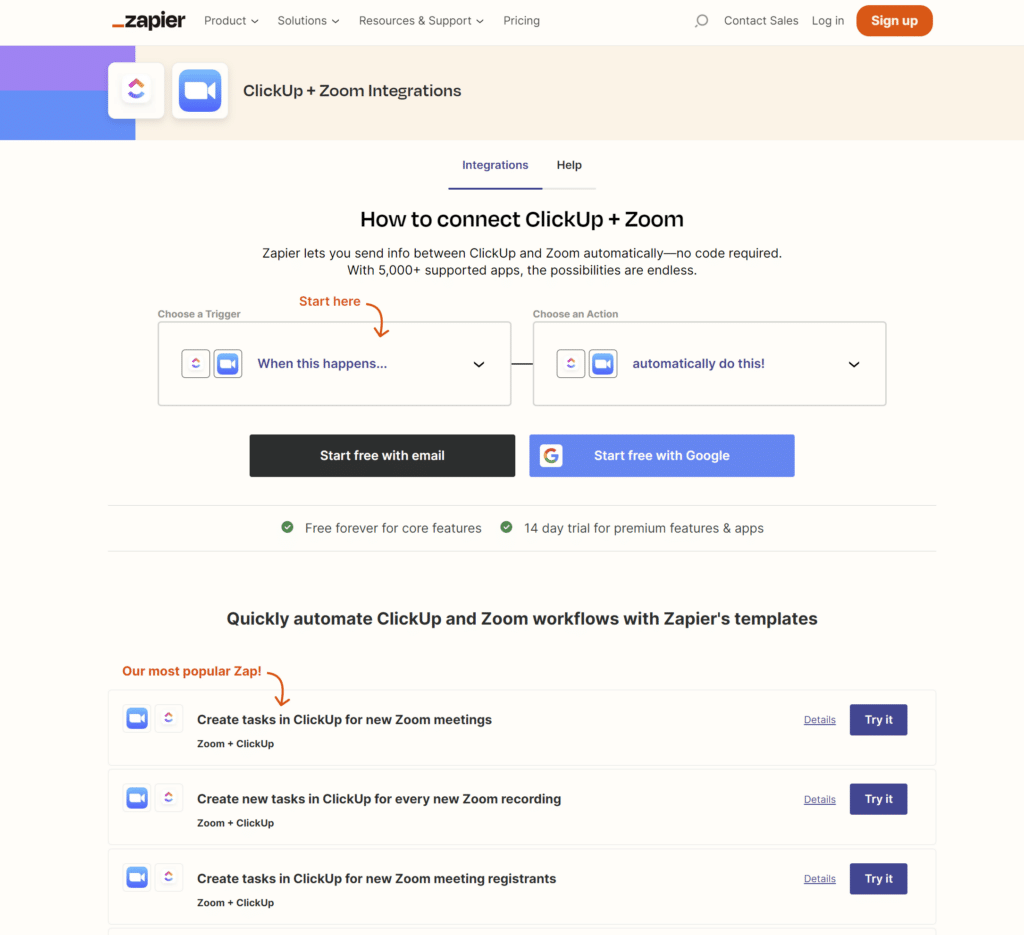
Every page displays relevant information about the different actions and triggers, which is exactly what the user wants and needs to know when navigating the page.
Does this integration solve my problem and integrate and complete the actions I need to be completed?
Remember, we’re creating a large page set here—often tens or hundreds of thousands of pages—and if those pages are of low quality, this can certainly degrade the organic performance of other SEO-related efforts made in the past.
Programmatic pages should provide comprehensive information rather than just scratching the surface.
This is important for both search rankings and ensuring that users actually take action or convert.
Content depth will also help establish a site as an authority on a particular topic, leading to higher rankings in search results.
Birdeye’s business listing pages provide a deep dive into not only basic information about the business but also:
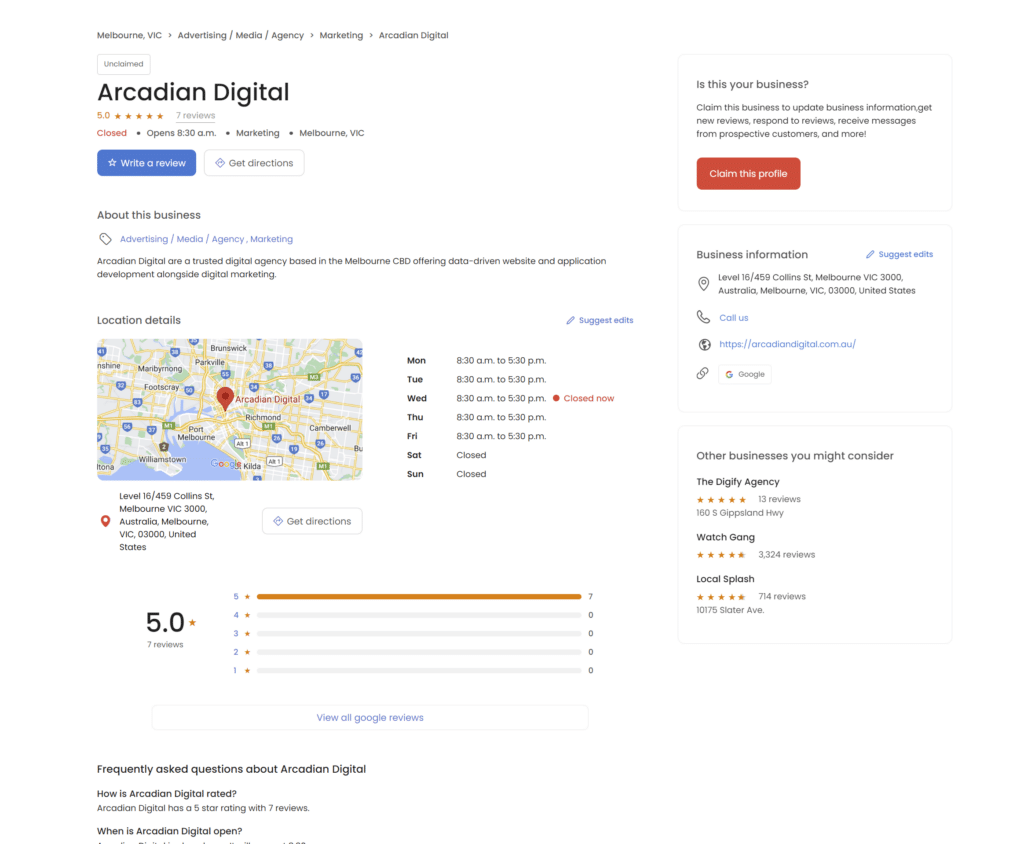
This is an example of building content depth to the page.
This is where third-party data sources usually tend to come into play, which we’ll cover later on in this article.
The goal and idea is not just to write a few words but rather to find a scalable pattern and way to create content depth that provides value.
Leading into our next core principle.
You must be able to create landing pages at scale without sacrificing quality or accuracy.
This requires using templates, automation, and other tools to streamline the process of creating landing pages.
We’re not creating these pages one-by-one, rather, we will:
Here’s a breakdown of some of Better Team’s top organic pages from their pSEO efforts around “{job type} job description”
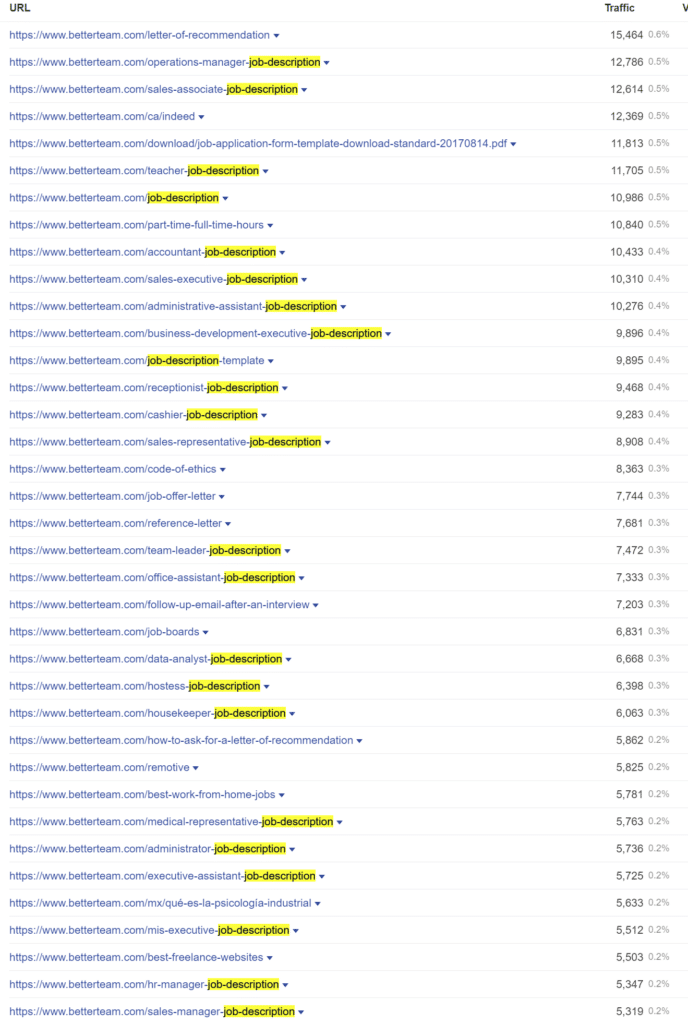
If the pattern breaks, then it’s not scalable, nor is it a good fit for this exercise.
Finally, a high-quality user experience is essential for effective programmatic SEO.
I can give tons of pSEO page sets from SaaS companies that rank and drive traffic – but I’m more than certain they don’t convert – and a big reason for that is the overall page and user experience is poor.
Our page sets must be well-designed, easy to navigate, and provide a seamless experience for users.
This is always the case, regardless of the page, and the same goes for our pSEO content pages.
Now that we’ve covered the basics, let’s explore the steps to getting started with your pSEO strategy step by step.
The first step in building your programmatic SEO strategy is researching potential seed phrases to target.
Remember – pSEO should be scalable in nature, so we’re looking for terms based on a seed term where we can add modifiers to the end of the query:
Seed term + modifier
Where to start with ideating seed terms?
Ask yourself:
Common examples of seed phrases in the SaaS space include:
These are only some of the more obvious starter examples.
The deeper you can go, the better.
Think about what your customers would be searching for that map back to your product and how you could leverage those searches in a pSEO fashion.
Wrike has created the perfect example of that, being a project management software by focusing on templates:
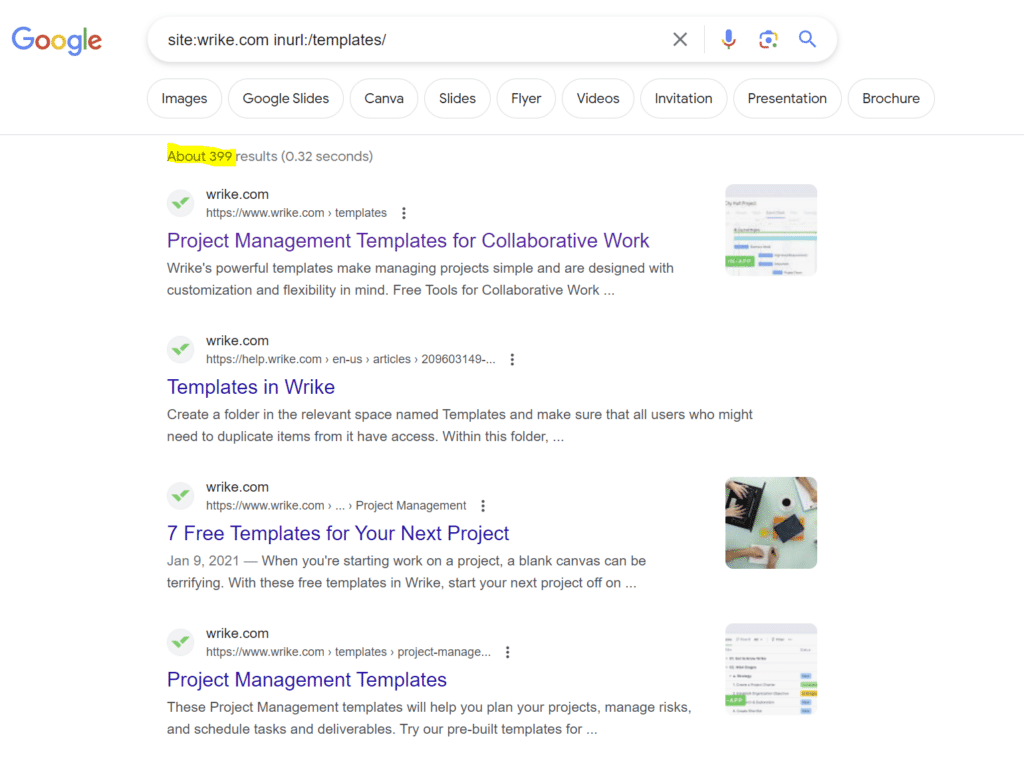
This works as follows:
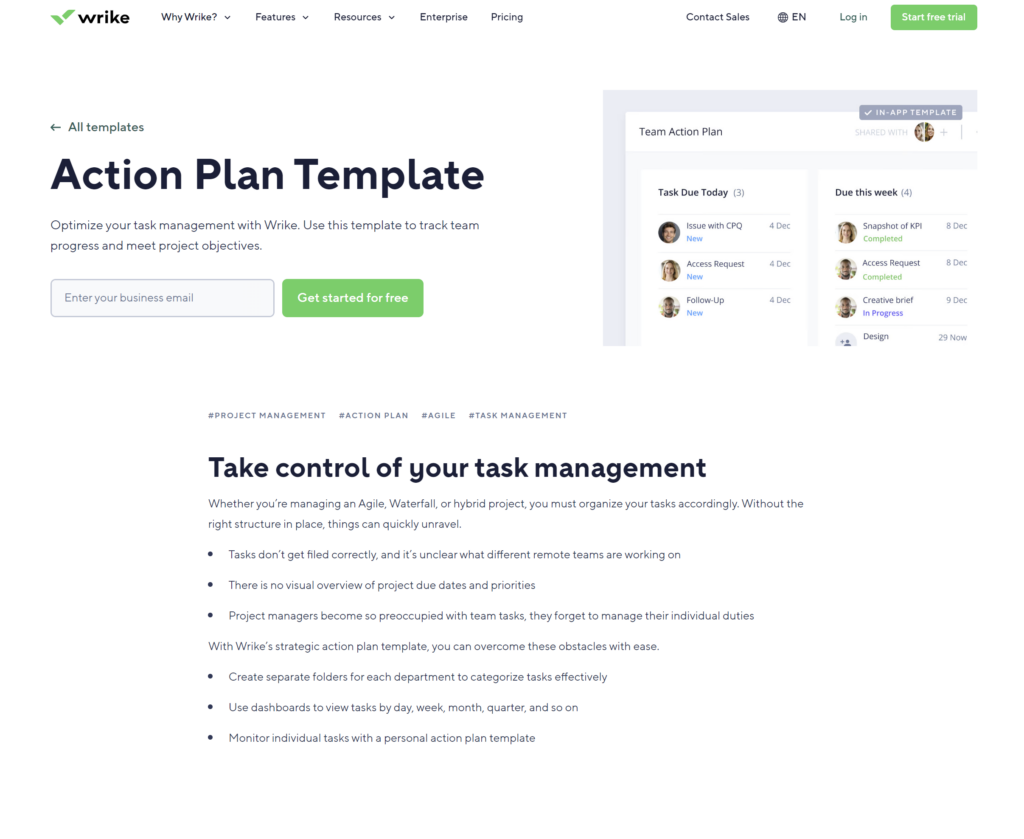
Powerful stuff.
Against popular advice, I’d recommend against starting by using popular keyword research tools – and put yourself in your customer’s shoes and try to brainstorm and ideate out potential head terms.
This will take some time. Build a list, and then it’s time to consider validating those terms, which we’ll cover in the next step.
Before diving into the landing page structure for programmatic SEO, it’s crucial to validate your seed phrase.
To validate your seed phrase and whether the juice is worth the squeeze:
We don’t discuss search volume in the context of validation here, as it’s a dated metric, and you won’t generally find reliable data on searches per month.
If you have a deep understanding of your customer base and know what they’re searching for and what will bring them value, you should rely on this for your initial seed phrase generation, compared to dated metrics such as search volume.
Additionally, these are some good questions to ask about your seed phrase to ensure its a good choice:
A good way to test the waters is to first release and index a smaller page set for a given seed phrase, give it some time to rank and drive traffic – see if there’s interest and conversion, and then scale the entire page set.
If you’re using an existing pSEO strategy where there are competitors in the SERPs, and you already know the demand is there, you can skip on down to start building ou the landing page and content you need to get this page set ranking and converting.
Creating your landing page structure should include building a page that is easy for search engines like Google to crawl and index, provides a great user experience, and has depth and accuracy in content.
The process for building out landing pages will vary depending on the CMS you’re currently using or if you’ve custom-built it.
If you’re looking to go all-in on building out pSEO strategies for customer acquisition, WebFlow is hands down the best solution for accommodating all of your needs – from design to architecture:
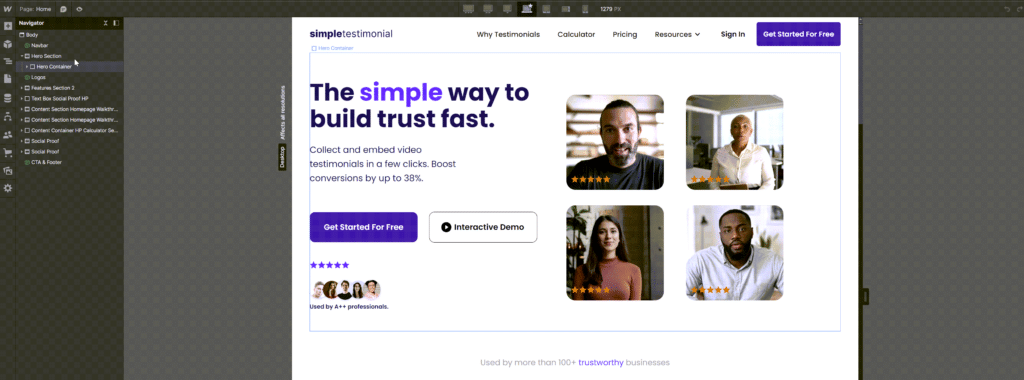
The following items would make up a great pSEO landing page:
Again, your template will vary based on the use case, but these are some of the core factors your landing page should include.
Outside of the landing page itself, you’ll want to build an architecture that supports internal linking, i.e. a “hub” page (or pages) where your pages can live. This will help search engines crawl and index the content and, in many cases, provide a great user experience for navigation.
Populating your data will depend heavily on the CMS and the data sources you’re using—i.e., whether those are internal data sources you already have or if you require scraping or third-party data to build out your page’s content sections.
We always highly recommend building on WebFlow, as it’s a clean way to import and manage data sets.
If you’re sourcing data from a third party to build components of your pages, the process looks as follows:
Additionally, AI-based content can be extremely effective for populating content on programmatic pages.
Don’t rely directly on ChatGPT for the output, as it’s generally poor. You’ll want to use and leverage a trained language model, where you can give it specific inputs and get high-quality outputs to hit on high-grade content quality across your pages.
Naturally, we’re talking about large page sets when it comes to programmatic SEO.
Based on your existing crawl budget and the number of pages you’re attempting to index, expect it to take quite some time for all pages to get indexed.
Google Search Console will be your friend here when it comes to monitoring the performance of your pSEO datasets:
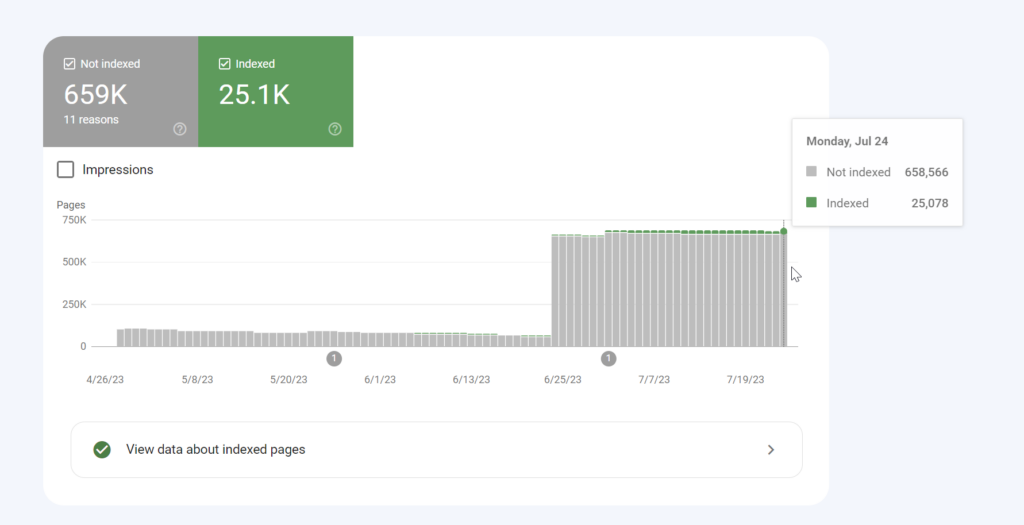
Search Console will allow you to monitor crawling and indexing performance, as well as keep an eye out for issues that could arise when it comes to getting your pages actually listed in Google’s search results:
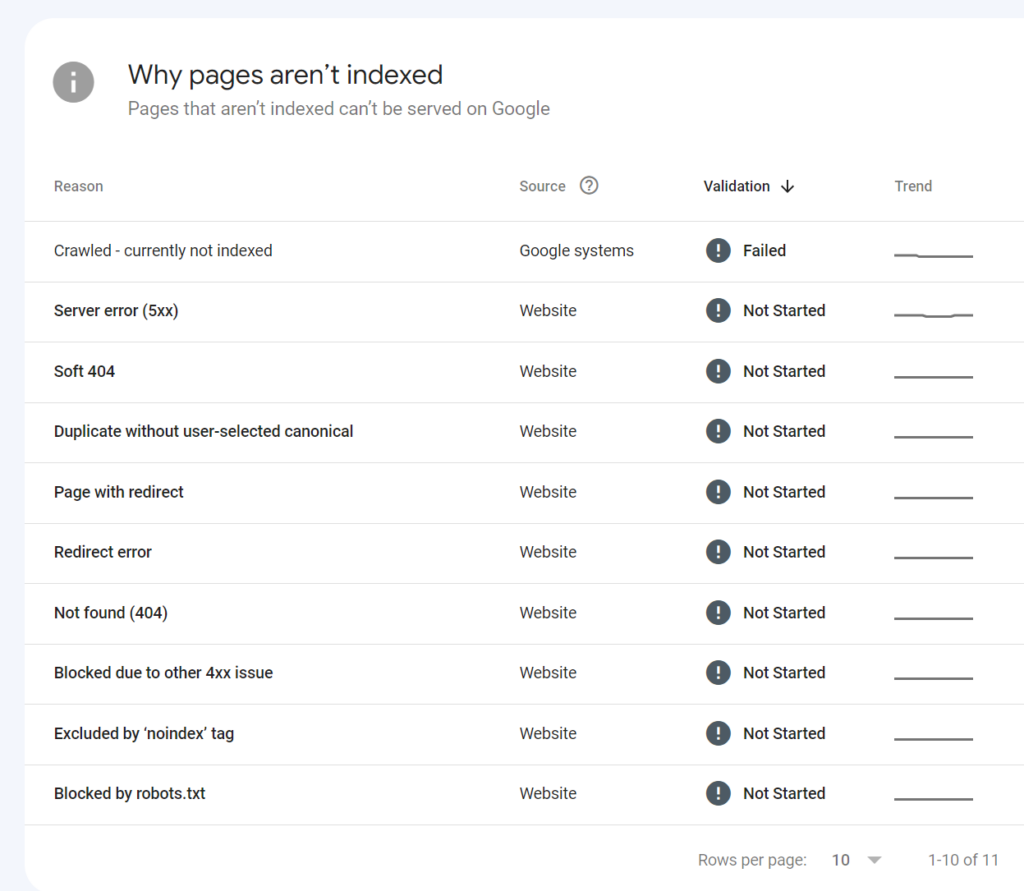
The crawling and indexing process can be improved by:
If you have priority pages, i.e., pages where the assumption that a certain grouping or pageset of your pages will perform better than others, it can make sense to “drip” them for indexing, meaning:
This will ensure these pages get indexed first versus getting pushed down the priority list when it comes to indexing and rankings.
After you click publish and push your page set live – the fun doesn’t stop just here.
pSEO efforts should be refined over time to ensure optimal performance when it comes to quality traffic and conversions.
Depending on the data set size, within the first few weeks to months, you should better understand SERP placements and can start working and improving these page sets over time for further performance.
If you’re not capitalizing on Programmatic SEO, you’re missing out.
There’s generally a use case for almost every product, and there’s still tons of opportunity to drive high-quality traffic by leveraging the power of tools that weren’t available in previous years.
Thanks to the tools we discussed in this article, programmatic SEO is now available to everyone. It will give you an upper hand in building a quality SEO strategy to outrank and outperform the competition.
Need help building and executing a winning programmatic SEO strategy? Rock The Rankings has worked with dozens of SaaS companies to develop winning pSEO strategies that scale quality traffic and drive conversions. Book a time below to connect, and let’s see how we can incorporate it into your customer acquisition strategy.
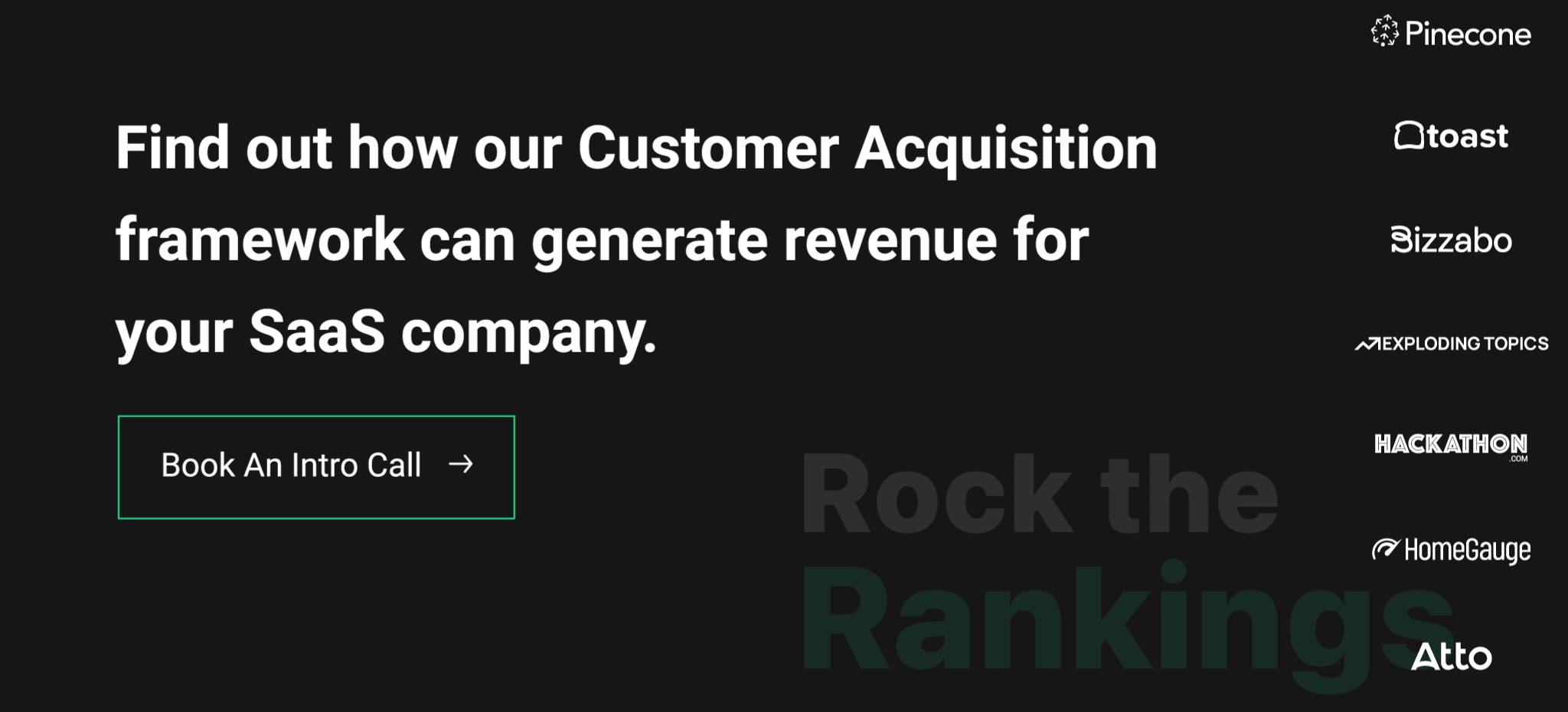
Founder of Rock The Rankings, an SEO partner that helps B2B SaaS brands crush their organic growth goals. An avid fan of tennis, and growing micro-SaaS businesses on the weekend. 2x SaaS Co-Founder – Currently working to build and scale Simple Testimonial.
Book a 1-on-1 intro call with our founder that includes a FREE custom marketing plan. Start growing faster, today.